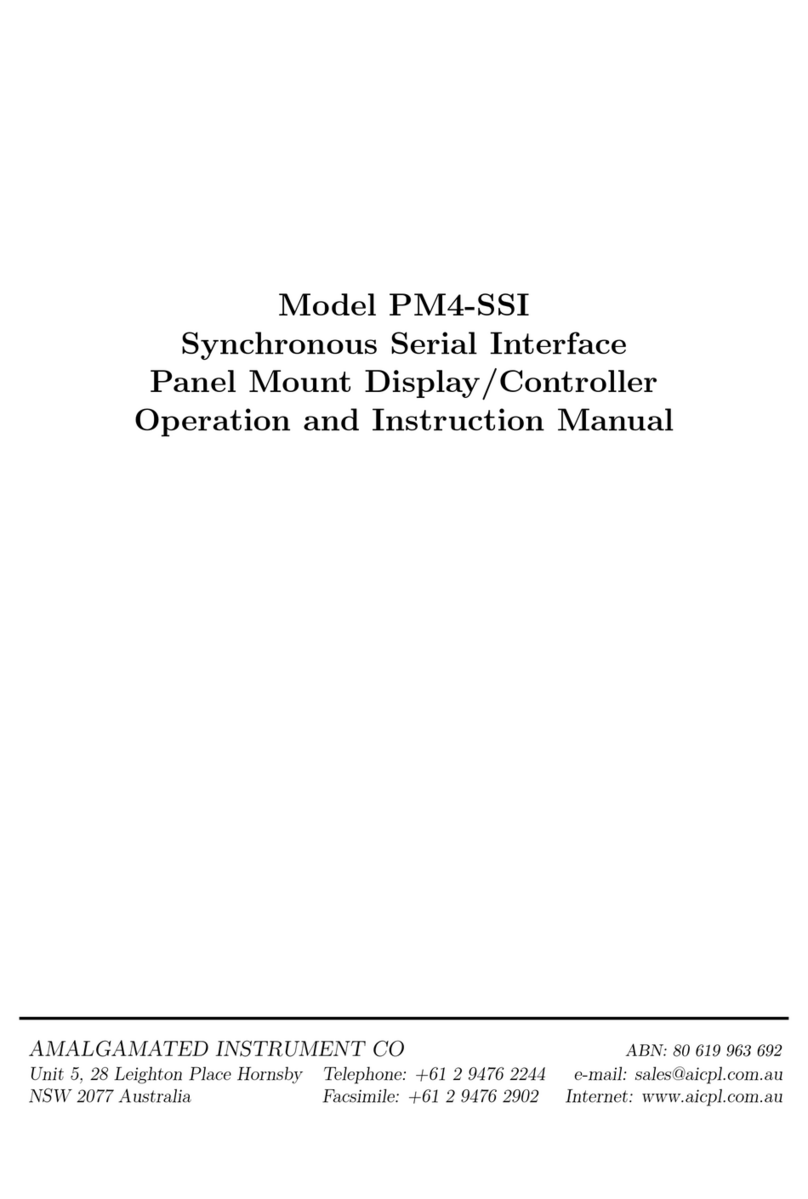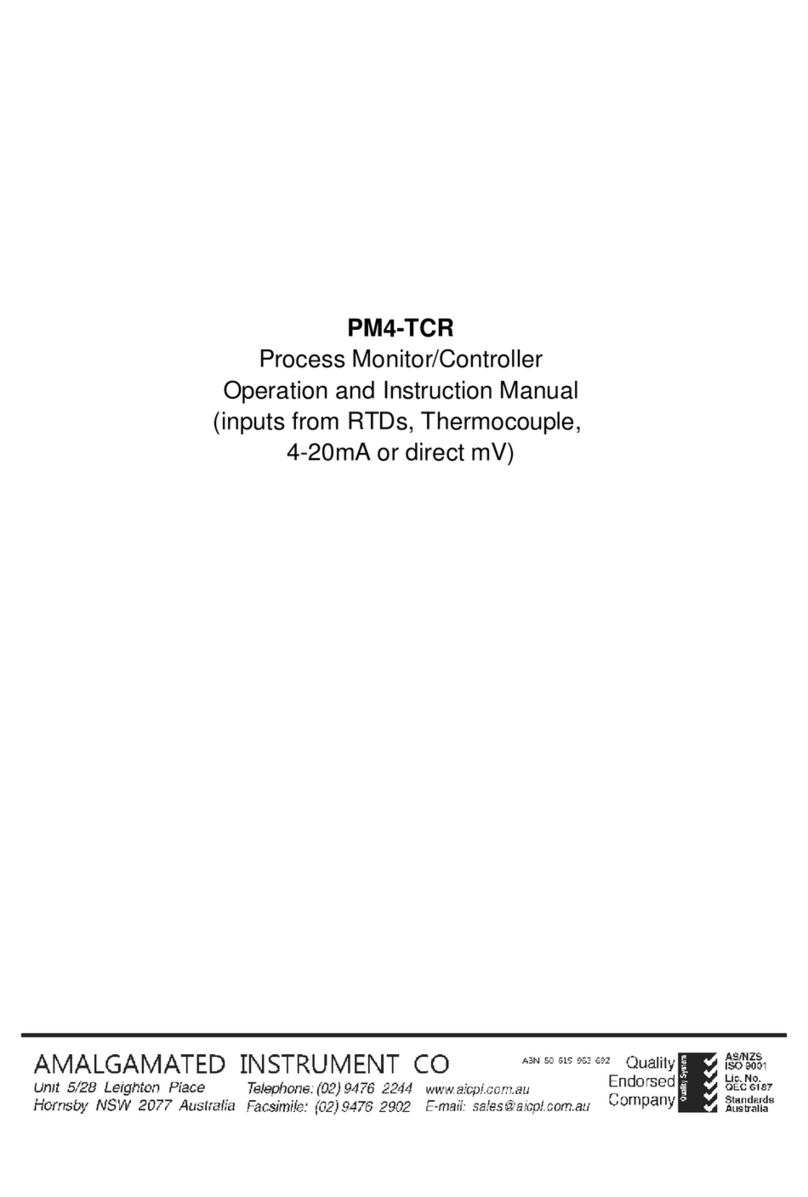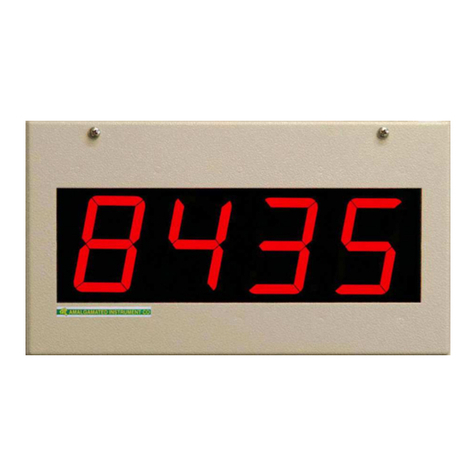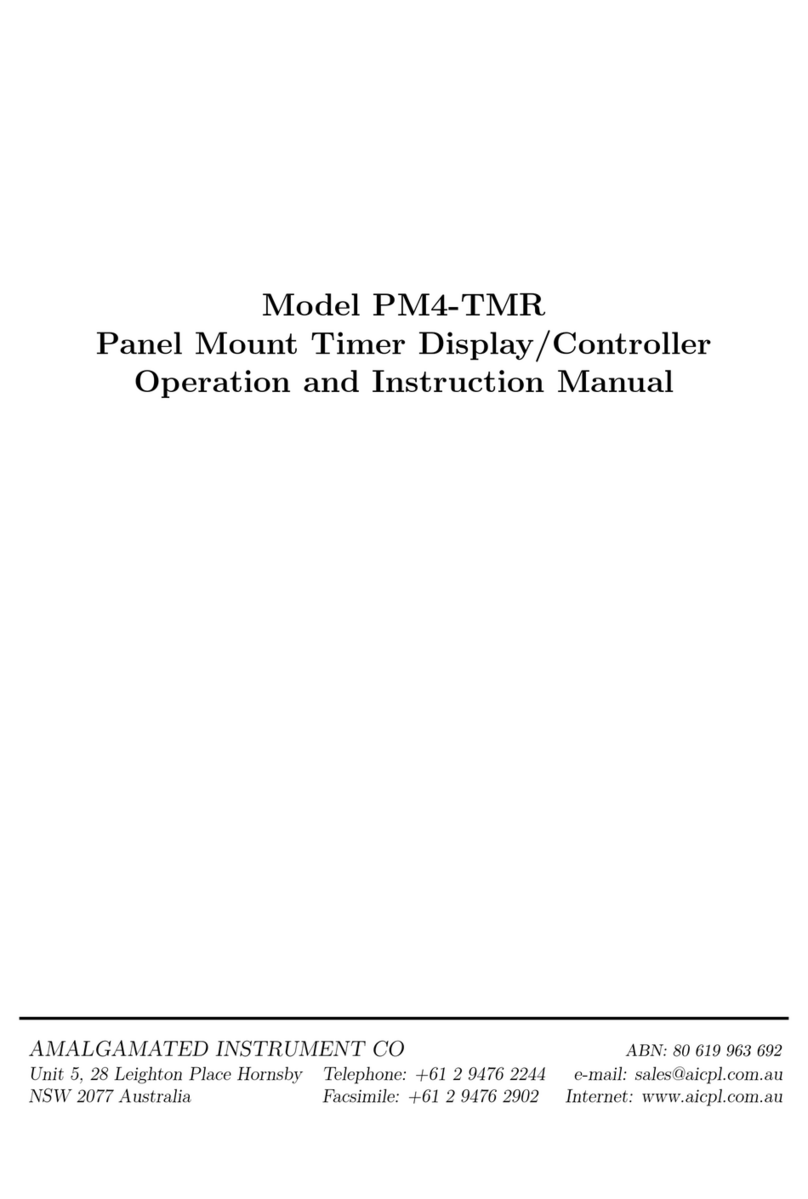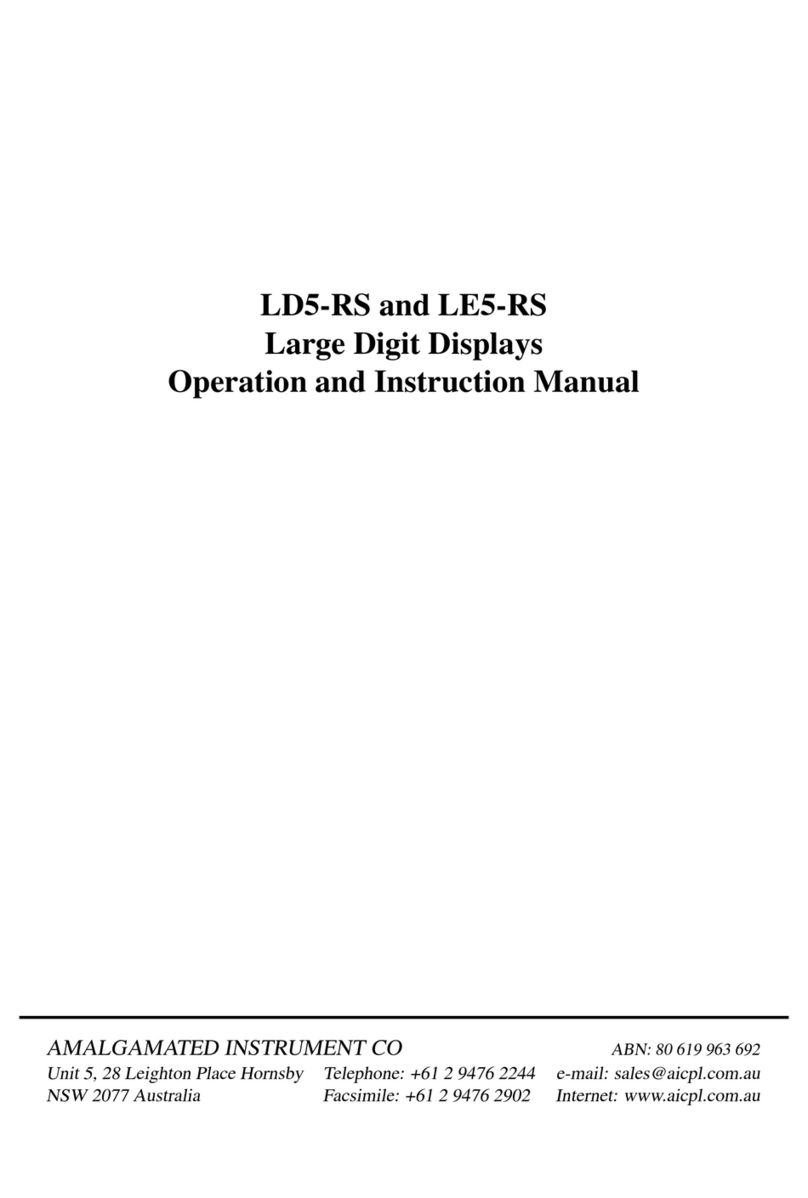
1 Introduction
General description
This manual contains information for the installation and operation of the LD5-TMR display. The display
has several modes of operation allowing up timing, down timing, stopwatch operation etc.
Electrical inputs for start, stop, reset and preset are provided.
An input from a voltage free switch connected to the Reset input (between connector D1 and GND on the
DIGITAL IN connector) or Preset input (between connector D2 and GND on the DIGITAL IN connector)
can be used to reset or reset to preset the display depending on the operation mode chosen.
1.1 Selecting and altering access levels
This subsection details the use ”access levels”. Access levels can be used to obtain easy access to functions
which are regularly required and to limit access to functions which are not required or which restricted
access is required. These access level settings can be ignored if no restrictions to access are required and
no easy access to selected functions is required.
Each setup function has a default access level allocated to it, for example the ascending alarm 1 function
AL.A1 is allocated a default level of 2. There is a facility for the user to change the access levels for a
limited number of functions to make them either easier to access or harder to access as required, see the
Fn.1 CodE function.
There are different ways of accessing setup functions, these are explained in the following section. Each
mode allows a selection of access levels i.e. allows some choice of which functions are accessible.
The access levels available are:
None - no access to functions
1- access to functions allocated to level 1
2- access to functions allocated to level 2
3- access to functions allocated to level 3
4- access to functions allocated to level 4
5- access to functions allocated to level 5
6- access to functions allocated to level 6
CAL - access to all normal operation functions
1.2 Accessing setup functions
The setup functions allow adjustment of the instruments operation functions. There are five different ways
of accessing setup functions. Each mode allows a selection of access levels i.e. allows some choice of
which functions are accessible.
As as summary the methods available are:
•Easy mode - this is the easiest access mode simply requiring the Fbutton to be pressed for 3
seconds. This mode would normally be used to gain access to functions which require frequent
adjustment.
•Remote input mode - this uses the Easy method of access but also requires the use of a remote
input switch.
LD5TMRMAN-1.1-0 3 of 57
